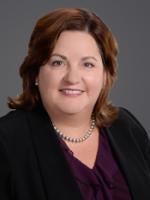The U.S. Department of Labor (DOL) recently finalized its much-anticipated rule which expands opportunities for small businesses and certain self-employed individuals to band together to obtain more affordable group health coverage under an association health plan (AHP). Published in the Federal Register on June 21, 2018, the final rule (83 Fed. Reg. 28912) is largely the same as the proposed rule, which was published on January 5, 2018, although the DOL made some notable modifications in response to the more than 900 comments received from the public.
Background
Section 3(5) of the Employee Retirement Income Security Act of 1974 (ERISA) defines “employer” to mean “any person acting directly as an employer, or indirectly in the interest of an employer, in relation to an employee benefit plan; and includes a group or association of employers acting for an employer in such capacity” (emphasis added). Under DOL guidance that existed prior to the proposed rule or final rule, the DOL rarely considered a “group or association of employers” to be an “employer” under ERISA. As a result, an AHP sponsored by a group or association would be considered a single-employer plan only in rare cases.
More often, the DOL considered an AHP to be a collection of single-employer plans, separately sponsored by each participating employer. Because many employers that participate in AHPs are small (between 2 and 50 employees), the DOL’s long-standing position usually resulted in any coverage obtained through an AHP being treated as “small group coverage,” subject to less favorable small group coverage underwriting and regulatory rules, making it more expensive. In contrast, large group coverage tends to have better premium rates and coverage, due to the increased negotiating power and economies of scale inherent in a large group, and large group coverage is not subject to many of the regulatory requirements that apply to small group coverage.
The DOL’s final rule retains the DOL’s existing “pre-rule” guidance establishing when a group or association of employers that sponsors an AHP will be considered to be a single employer, but it also broadens the definition of “employer” by creating an alternate pathway by which a group or association of employers, including certain self-employed individuals, can be deemed to be a single “employer” under ERISA Section 3(5). The final rule will enable many more business groups and associations to sponsor AHPs that will be considered single-employer large group plans under ERISA, which can offer coverage to their members on more advantageous terms than otherwise available through small group coverage.
Alternate Pathway to “Employer” Status
Under the final rule, the DOL will look at two key factors when determining whether a group or association of employers that sponsors an AHP is a single “employer”:
-
whether the employers share a “commonality of interest”; and
-
whether the employer members have control over both the association that sponsors the plan and the benefit plan itself.
Commonality of Interest. As under the proposed rule, the final rule provides that association member-employers can meet the commonality-of-interest test by either being in the same trade, industry, line of business, or profession (regardless of geographic location) or by having a principal place of business within a single state or metropolitan area (even if the metropolitan area includes more than one state). Examples of such metropolitan areas include the Greater New York City Area/Tri-State Region covering parts of New York, New Jersey, and Connecticut, and the Washington Metropolitan Area of the District of Columbia and portions of Maryland and Virginia. Smaller geographic regions, such as a city or county, also satisfy the commonality-of-interest test.
The final rule incorporates several measures to distinguish between commercial arrangements that exist only to sell insurance and true employment-based plans:
-
Substantial Business Purpose. The final rule adds a new requirement that the group or association of employers must have at least one substantial business purpose unrelated to providing health plan coverage or other employee benefits, even if the group’s primary purpose is to provide such benefits. The substantial business purpose can be to promote the common business interests of its members and need not be a for-profit endeavor. The DOL will consider a substantial business purpose to exist if the group or association would be a viable entity, even if it did not sponsor an AHP.
-
Insurance Issuers Cannot Sponsor. The final rule confirms that the group sponsoring the AHP cannot be a health insurance issuer, and it expands that exclusion to include network providers, healthcare organizations, and other businesses that are part of the U.S. healthcare delivery system. Such organizations can, however, administer or provide other professional services to an AHP.
-
Requirement of Employment-Based Coverage. The final rule retains the requirement that AHPs may only cover the employees, former employees, and beneficiaries of their employer members. Coverage cannot be sold to non-member employers or the general public.
Control. To satisfy the final rule’s “control test,” the functions and activities of the group or association must be controlled by the employer members and those employer members that participate in the AHP must control the AHP (although they need not manage its day-to-day operations). The association must have a formal organizational structure through which member-employers, directly or indirectly, control the AHP’s functions and activities, including the establishment and maintenance of the group health plan. The association or group must, for example, have a governing body and bylaws or other formalities appropriate for its legal form. In determining whether the control test is met, the DOL will look at all the facts and circumstances, including whether employer members
-
regularly nominate and elect directors, officers, trustees, or similar persons who constitute the governing authority of the group or association and the plan;
-
have authority to remove any such director, officer, trustee, or similar person with or without cause; and
-
with respect to those who participate in the AHP, have the authority and opportunity to approve or veto decisions or activities relating to the formation, design, amendment, and termination of the AHP.
Coverage of Self-Employed Individuals
The final rule adopts the proposed rule’s expansion of AHP coverage to certain working owners, sole proprietors, and other self-employed individuals without common law employees, by allowing them to elect to act as employers for purposes of participating in an employer group or association. Under the final rule, a working owner may be treated as an employee for purposes of eligibility to participate in an AHP if the individual has wages or income from self-employment for providing personal services and either works an average of at least 20 hours per week or 80 hours per month (down from the proposed rule’s 30 hours per week or 120 hours per month) or earns income from self-employment that at least equals the cost of coverage under the AHP.
In response to public comments, the DOL struck from the final rule a provision contained in the proposed rule that would have disqualified a working owner from coverage under an AHP if he or she was eligible for other subsidized group health plan coverage under a plan sponsored by any other employer, including the plan of a spouse’s employer. It also eliminated the provision that would have allowed the AHP to rely on the written representation of a working owner that he or she met the requirements to participate in the AHP. AHPs will have to develop their own verification processes to determine that all employers and employees participating in the AHP, including working owners, are in fact eligible to do so.
Nondiscrimination Rules
The final rule largely adopts the nondiscrimination standards from the proposed rule, with one clarification. The nondiscrimination provisions, which build upon the nondiscrimination provisions already applicable to group health plans under existing law, are designed to prohibit associations from restricting or denying membership—and thus AHP coverage—on the basis of health factors (which include health status, medical condition, claims experience, receipt of healthcare, medical history, genetic information, evidence of insurability, and disability). Under the final rule, an association is generally prohibited from premium rating at the member-employer level, but can set eligibility requirements and premiums based on “bona fide employment-based classifications.” This means eligibility and premiums can vary based on classifications such as full-time versus part-time status, current versus former employee status, different geographic locations, date of hire, membership in a collective bargaining unit, length of service, different occupations, or relationship to an employee or former employee. The final rule clarified, however, that an AHP may vary premiums on an employer-by-employer basis based on factors such as industry, occupation, or geography, as long as the premium differences are not based on health factors and are not directed at individual participants.
AHPs Are Multiple Employer Welfare Arrangements
The final rule reaffirms that AHPs are still considered multiple employer welfare arrangements (MEWAs), which are subject to regulation by each state in which they operate. Due to a history of abuses by MEWA operators, both the states and the DOL subject MEWAs to heavy regulatory scrutiny. The final rule makes no changes to the regulatory environment for MEWAs, but the DOL notes in the preamble to the final rule that it anticipates “close cooperation with State regulators to guard against fraud and abuse.”
Effective Dates of the Final Rule
The effective dates of the final rule are staggered depending on the type of AHP:
-
September 1, 2018, for new and existing fully-insured AHPs;
-
January 1, 2019, for self-insured AHPs that are in compliance with the DOL’s pre-rule guidance on AHPs and that wish to expand the group or association under the terms of the final rule; and
-
April 1, 2019, for new self-insured AHPs formed under the final rule.
State Attorneys General Plan to File Suit Over the Final Rule
Although the final rule is slated to go into effect for some AHPs later this year, the matter may not yet be settled. The attorneys general of New York and Massachusetts (AGs) announced that they plan to file suit against the Trump administration over the final rule, which they believe will weaken important consumer protections under the Affordable Care Act (ACA), such as requirements for essential health benefit coverage in the individual and small group markets. The AGs, along with the attorneys general of 15 other states, submitted comments in March on the proposed rule, asserting that the proposed rule would “increase the risk of fraud and harm to consumers; would undermine the current small group and individual health insurance markets; and are inconsistent with the text of [ERISA] and the ACA.” Unless and until a court or the DOL says otherwise, however, the rule will go into effect as planned.
Tips for Establishing New AHPs
For employers or associations that may be considering whether to establish an AHP, remember that establishing the association to sponsor the AHP under these new rules is just one piece of the puzzle. The benefits offered through the AHP are typically subject to ERISA, so that standard ERISA compliance structures would need to be established to ensure that plan documents, summary plan descriptions, and other mandatory notices are timely provided, and that the annual Form 5500 reporting and other mandated reporting can be timely completed. COBRA, HIPAA, and the ACA will also apply to the plan, as will ERISA’s fiduciary requirements. As a MEWA, the federal Form M-1 filing may be required, and compliance with state laws regulating MEWAs is also necessary. In most cases, the plan will need to be funded through a trust that meets state law requirements. If employees will purchase coverage on a pre-tax basis, a Section 125 cafeteria plan will need to be adopted by each participating employer.







 />i
/>i

